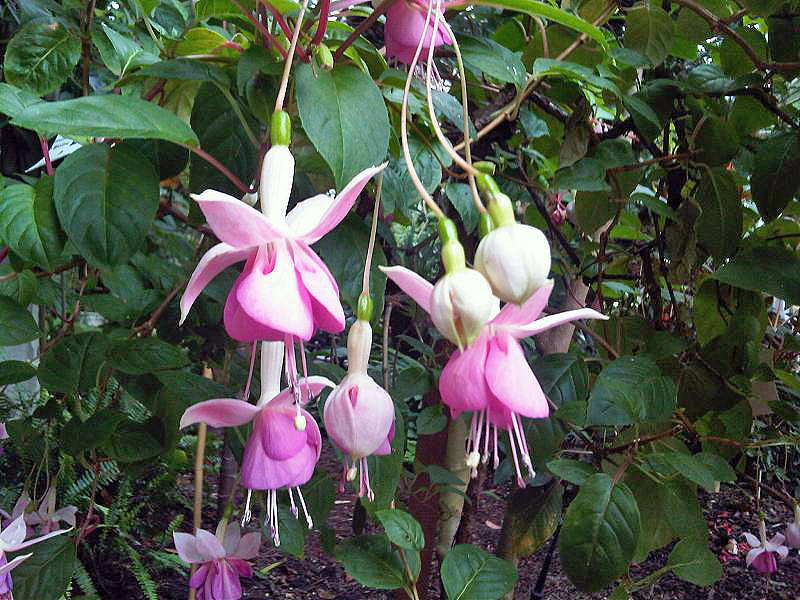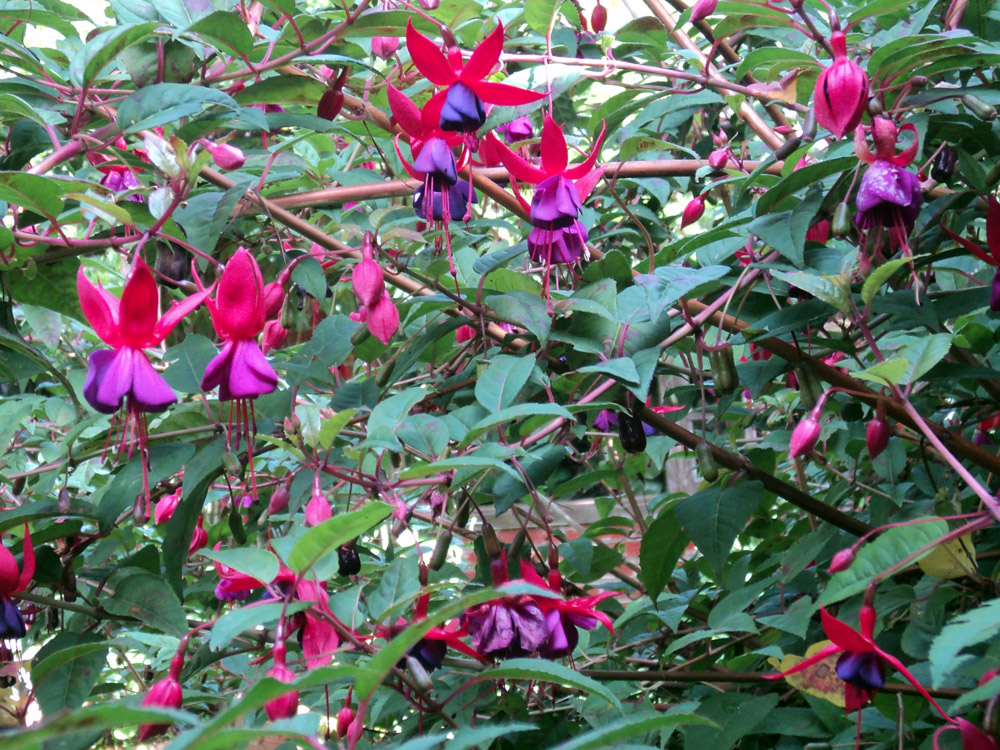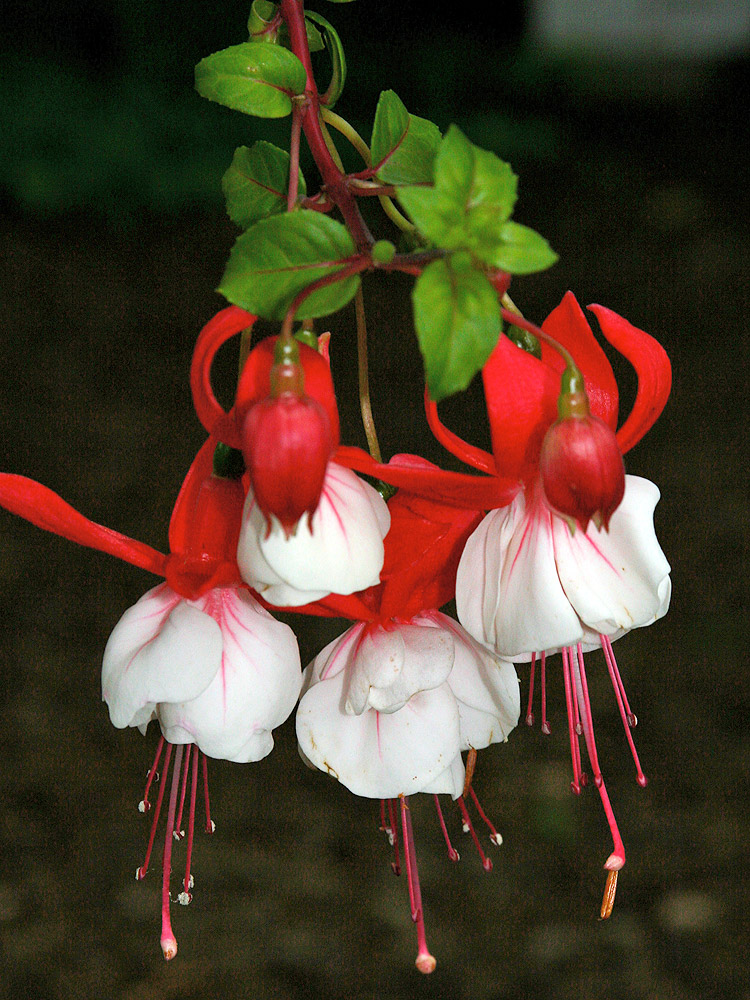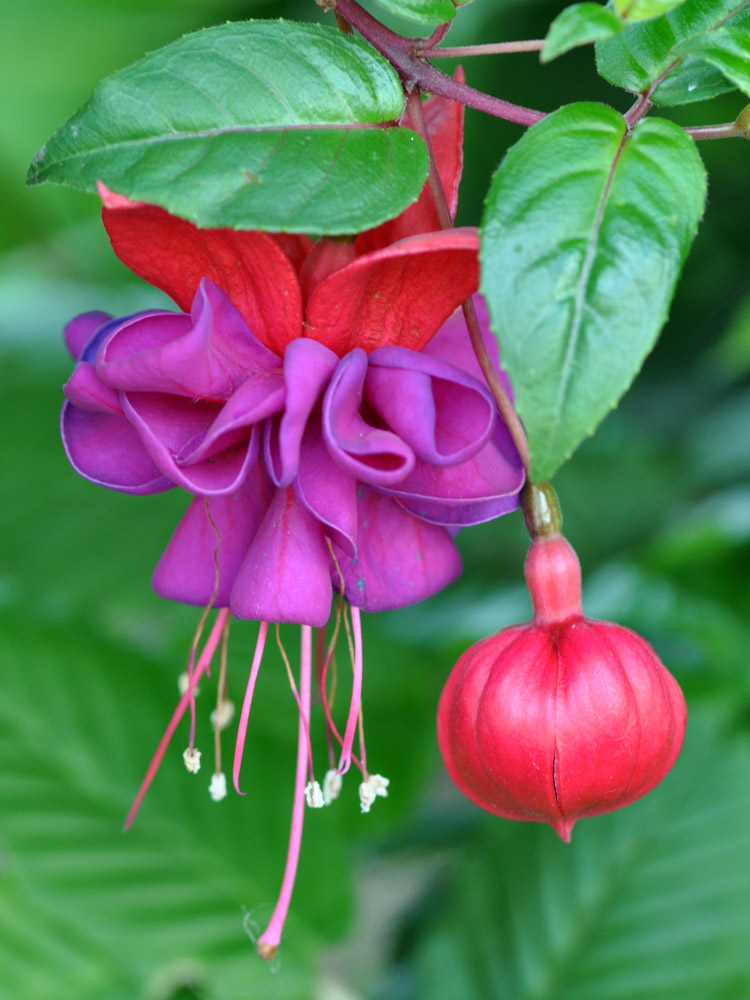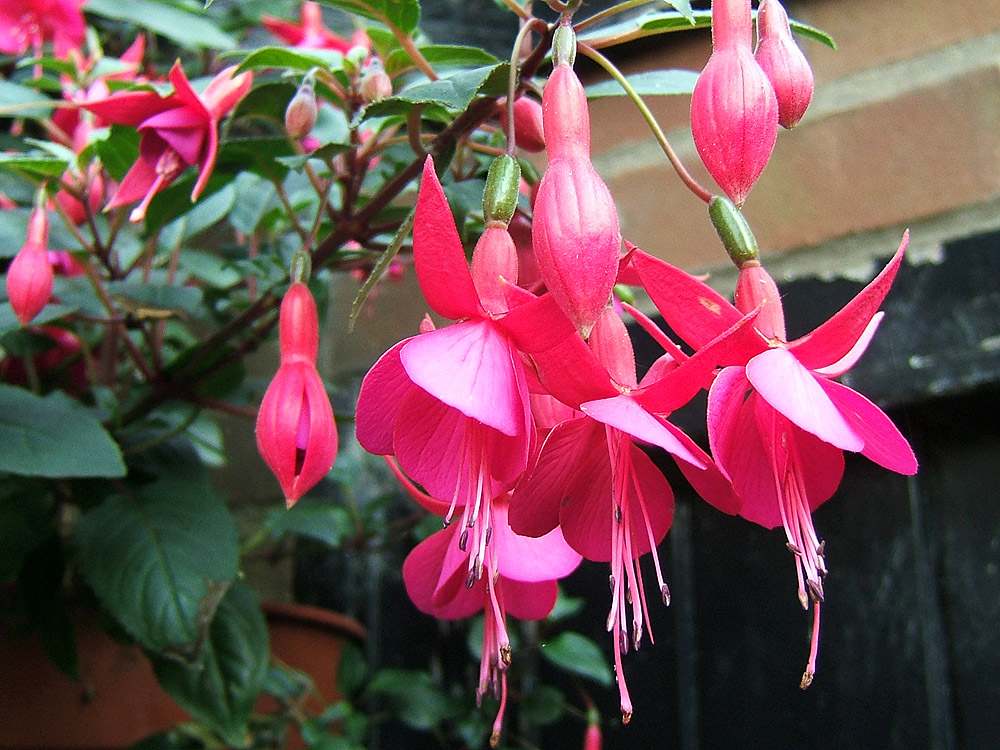Garden Plants, How
and where to grow them
Flowering Perennial
/ Shrub
Fuchsias - Half Hardy
The half-hardy Fuchsias are the group that people most often think of as typical of the group. They have large showy flowers in the summer months in two shades of white, cream, red, pink or purple and can be readily overwintered somewhere frost-free.
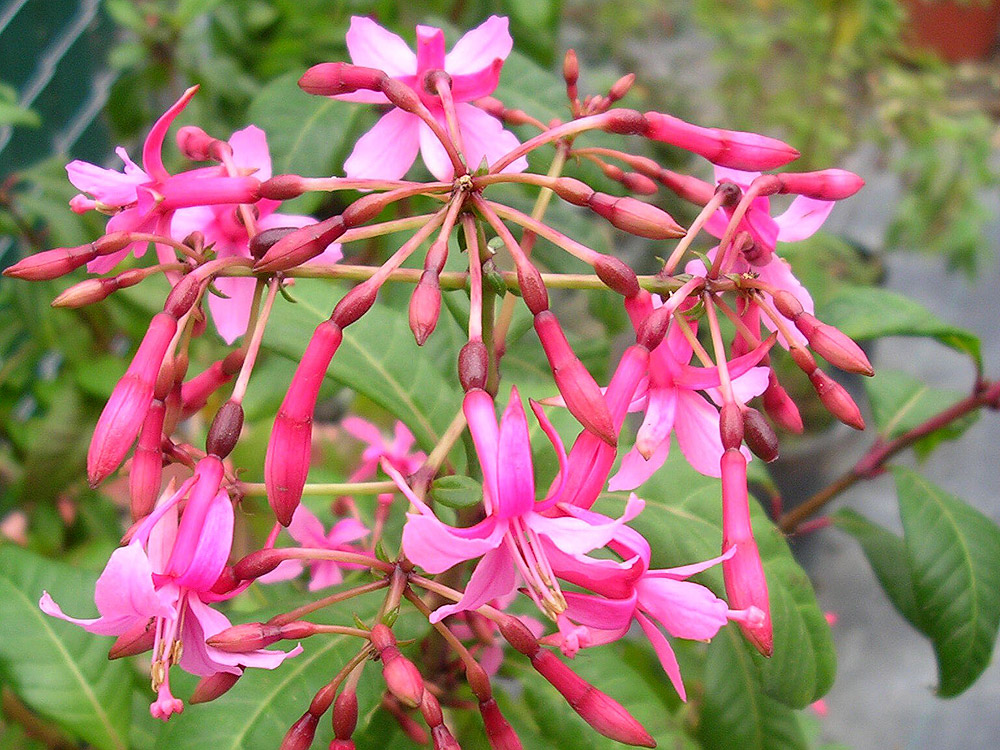 The flowers are usually paired and downwards facing,
which while it adds to their charm, can also limit their use
in the garden, though many gardeners are more than
prepared to display these plants above ground level in order
to enjoy them.
The flowers are usually paired and downwards facing,
which while it adds to their charm, can also limit their use
in the garden, though many gardeners are more than
prepared to display these plants above ground level in order
to enjoy them.
These are usually bought as small plug plants in the spring, which is the most economical way of buying them. They can be overwintered easily in a frost-free place, such as a greenhouse, conservatory or similar.
They shouldn't be kept too warm in the dormant season as it encourages growth and in the absence of much light in the winter this results in weak and leggy growth. As long as they don't get frosted, are kept reasonably moist and an eye is kept on them for aphid infestations (which can happen in mid-winter), they can be kept for several years (after or during which time cuttings can be taken to keep the plants going).
Fuchsias can be grown in sun or semi-shade. They need moisture and flower better when the roots are somewhat restrained - this means a relatively small container to plant size is needed and means that they will dry out very quickly in sunny a spot. The leaves are quite thin and soft and can be burnt by too much direct sunshine.
- Height and spread: up to 1m x 1m (3ft x 3ft) but very variable by variety and typically plants are half this size when mature.
- Position: sun / semi-shade
- Soil: fertile, well-drained soil
- Rate of growth: average
- Flowering period: May to October
- Flower colour: two shades of white, red, pink and purple. The outer layer is usually recurved sepal with the true petals forming a central corolla, long stamens and anthers frequently protrude.
- Flower size: from 0.5cm (1/4 inch) to 6cm (2 1/2 inches) across according to variety
- Hardiness: NOT frost hardy, can be overwintered in a cool frost-free and light place
- Garden care: Deadhead regularly to prolong flowering - many will form dark fruit if left, so using much energy. Young plants should be pinched out at every set of 4 leaves that appear to promote a bushy habit, then leave after late spring/early summer to encourage flowering. Keep moist at all times, but not wet. Generally easy to grow as long as they don't get dry or scorched.
- Pruning: 2nd and subsequent year plants can be cut back in early spring before much growth has started to keep the plant compact, later pruning will affect flowering too much.
- Uses: Containers, especially hanging baskets, wall pot etc.
Just how do you spell this name!? This genus of plants is named after the botanist Leonhart Fuchs, so adding "ia" for makes it more Latin-like. Other similar examples are Joseph Banks and Banksia and Louis Antoine de Bougainville and Bougainvillea.
A fabulous photographs site - over 300 varieties and nice big pictures too.
Photo credits: (numbering left to right top to bottom) 1-anniesannuals - Creative Commons Attribution 2.0 license. / 2-Emoke Denes2 - Creative Commons Attribution 2.0 license. 5 / 3-Korbinian - Creative Commons Attribution 1.0 license. universal / 4-Muffet - Creative Commons Attribution 2.0 license. / 5-Picture 010 / 6-Quartl - Creative Commons Attribution 3.0 Unported license. / 7-su neko - Creative Commons Attribution 2.0 license.
Copyright 2000 - present. All Rights Reserved | Privacy Policy Statement

